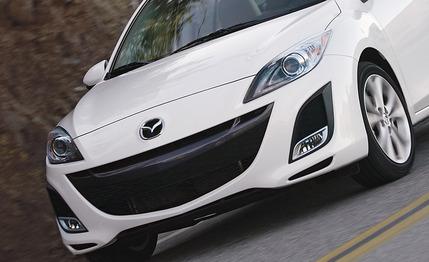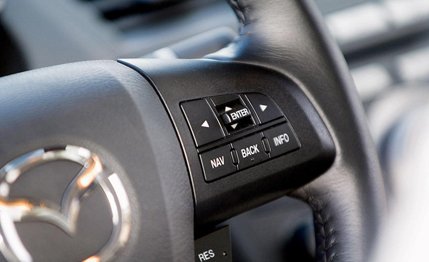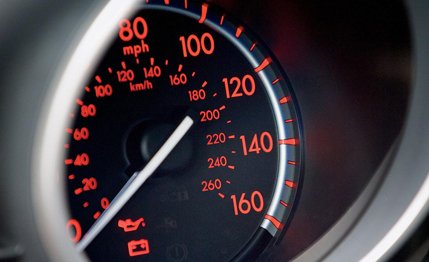
 Road Test
Road Test
Change! It was the hottest thing last year, and anyone selling it did good business in a soft market. Sure, the new Mazda 3 has more emotion, more refinement, and a bit more power, but otherwise it’s basically the same thrifty little corner darter as before. Summon the firing squad.
Hey, you said you want change. Cheat-grass-fueled flying landaulets—that’s change, brother. And while you’re waiting for the real change, watch as Mazda dares you to love nuanced change, change by inches.


The 3 is Mazda’s lifeline, representing about 42 percent of the brand’s sales. No other model comes close. A snap, unscientific, non-peer-reviewed poll of known automotive writers finds a healthy number (okay, two) owning the old Mazda 3. Yes, our own greenbacks, earned writing car porn. Expressive lines, deft handling, and a price that required just a little stretch sealed at least a couple of sales among the stupendously jaded.
Change? We wished the old 3 were quieter and had gauges that were more legible. Otherwise, we had no big objections.


Both the new sedan and wagon were to be sent to dealers in late March, with some increase to the base and option-pack prices for the standard 148-hp 2.0-liter and the upscale 167-hp 2.5. Entry should be in the mid-15s, with the extra-deluxe Grand Touring with the 2.5 like the one shown here starting at about $23,000. The GT comes with such delights as leather, rain-sensing wipers, 17-inch wheels, and swiveling xenon headlamps.
Load it up as we have here with the Moonroof & Bose package and the Technology package of navigation, alarm, satellite radio, and pushbutton start, and you basically have a mini Mazda 6 for about $26,000.
Oh, where art thou, change? Right up front, with the new wide-mouth-bass look. With its jaunty cheek ducts and teardrop eyes, this is basically the RX-8’s face projected in IMAX. We expect this sort of cartooning from France, where 1950s funnyman Fernandel and his gaping maw inspired the current generation of Peugeots. Indeed, Mazda’s chief designer, Laurens van den Acker, hails from Holland, which is practically indistinguishable from France on old Axis maps.
_______________________________________________


Thumb Drive
A cluster of nav buttons on the wheel are well placed and easy-breezy to use.
_______________________________________________
The former 3’s pleasing proportions are retained, down to the curt overhangs, chop-tail trunk, and tight-fitting wheels (designers call the unsightly empty space between tire and fender the “dead-cat zone”). But the slab sides are transformed, the new body churning with expansive front fenders and a steeply raked swage line spearing the door handles, plus a minuscule dead-cat zone. Silver-chrome pupils punctuate the red daggers of the taillights, which evoke Cat Woman more than Fernandel’s Don Camillo.
Sculpted, skinned, and trimmed with more bravura, the 3’s new dash envelops the driver more thoroughly, the center console sloped and shaped to bulge its radio and climate-control knobs closer to you. Turn the radio’s volume knob, and the surrounding blue-toned light strips blip in response, jukebox style. Other mood lights tinge the center console and footwells with blue light. Everything looks and feels more expensive than it is.
_______________________________________________


Red gauges remain and are one of the few imperfections. No, it doesn’t go
160 mph (119 mph is the max).
_______________________________________________
The gauges are simple: fuel and odo in the center, with twin tubes housing the tach and speedo. A digital readout, colored red, reports climate settings, radio status, and the outside temperature, and when equipped with navigation, a small, three-by-five-inch color screen peers like a clerestory over the upper dash, just inches below the forward sightlines.
The five buttons and single joystick controlling the nav cluster on the 3 o’clock steering-wheel spoke are an inspired piece of design efficiency. Compared with using a touch screen, entering addresses takes a few extra seconds of joystick thumbing as you scroll the alphabet, but the controls become friendly after only minutes and are intuitively operated while driving, if necessary. Plus, the scheme doesn’t require major dash reorganization if a nav system isn’t optioned.